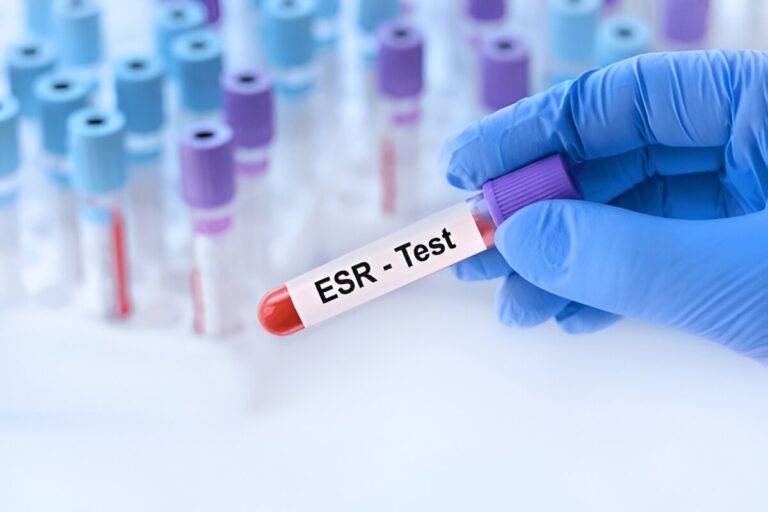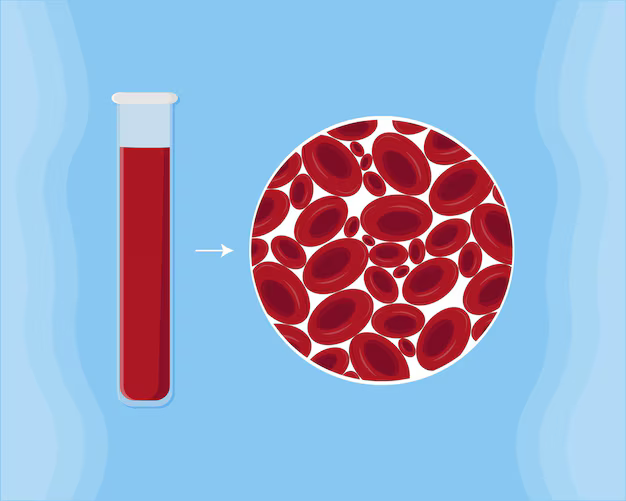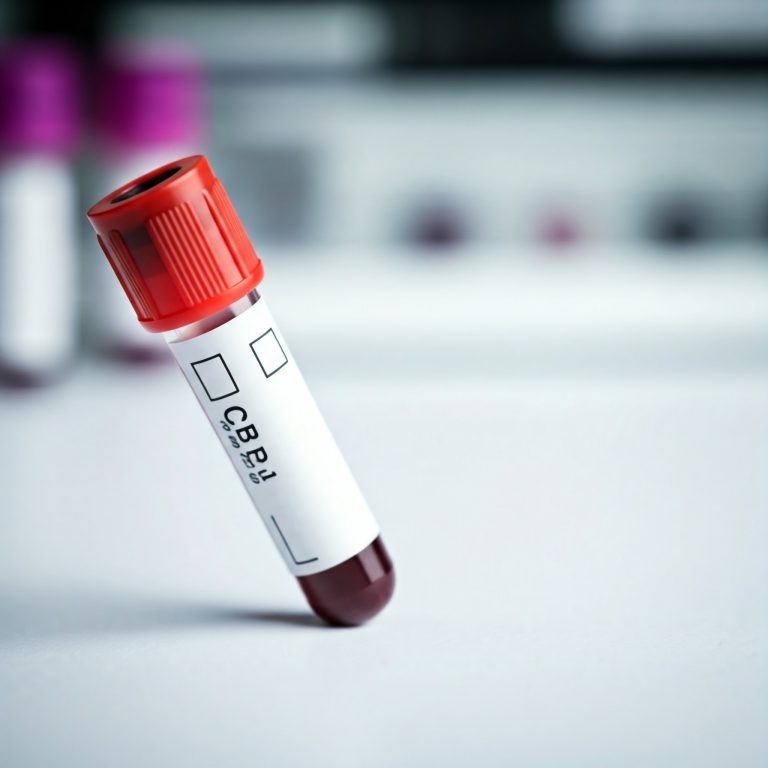ESR Test: Meaning, Importance, and When You Should Get It Done
October 01,2025

Imagine you shake a snow globe, and the flakes fall slowly to the bottom. Now picture those flakes clumping together and sinking faster. That’s a lot like what happens in your blood during inflammation, and it’s exactly what the ESR test measures.
The erythrocyte sedimentation rate (ESR) is a simple, low-cost blood test that shows how quickly red blood cells settle at the bottom of a tube. Normally, they sink slowly. But when there’s inflammation, they stick together and sink faster. The speed tells doctors one thing: your body is fighting something.
But here’s the catch: while the esr blood test reveals inflammation, it doesn’t tell you why. That’s why it’s often used alongside other tests to paint a clearer picture of your health.
What Is ESR and Why Is It Important?
So, what is esr? ESR stands for erythrocyte sedimentation rate, which is just a medical way of saying how fast your red blood cells fall in a test tube over an hour.
Doctors order the esr test when they suspect inflammation from conditions like:
- Arthritis or autoimmune disorders
- Inflammatory bowel disease (IBD)
- Chronic infections
- Certain cancers
- Kidney or heart disease
Simply put, ESR is like a “smoke detector” for your immune system; it doesn’t tell you where the fire is, but it warns that something’s burning.
When Do You Need an ESR Blood Test?
Your provider may suggest an esr blood test if you’re showing common signs of inflammation such as:
- Persistent fever or fatigue
- Headaches or unexplained weight loss
- Joint stiffness or swelling
- Neck or shoulder pain
- Loss of appetite or anemia
It’s also useful for tracking existing conditions, for example, monitoring flare-ups in rheumatoid arthritis or checking for post-surgical complications.
How Is the ESR Test Done?
The esr blood test is straightforward:
- A healthcare professional draws blood from your arm.
- The sample goes into a tall, thin test tube.
- After one hour, the lab measures how far your red blood cells have dropped.
That’s it—no special prep required unless you’re getting other tests at the same time. Occasionally, your doctor may ask you to fast for combined testing.
ESR in Blood: What Do the Results Mean?
Your esr in blood results are given in millimeters per hour (mm/hr). Here’s how they’re usually interpreted:
- Normal: ESR within the expected range for your age and sex → usually no significant inflammation.
- High ESR: Red cells sink faster than normal → may indicate autoimmune disease, infection, kidney disease, IBD, rheumatoid arthritis, or even certain cancers.
- Low ESR: Red cells sink slower than expected → sometimes linked to blood disorders (polycythemia, sickle cell disease), high white blood cell counts, or heart/liver problems.
It’s important to know that many factors can influence esr in blood: age, pregnancy, menstrual cycles, obesity, alcohol use, and even exercise. That’s why ESR is never used as a standalone diagnostic tool.
Are There Any Risks With the ESR Test?
Very few. You might feel a quick sting when the needle goes in or notice slight bruising at the puncture site. But overall, the what is esr test procedure is considered very safe.
Key Takeaways
- The ESR test is a simple and quick way to detect inflammation.
- It doesn’t diagnose a specific disease but signals when further testing is needed.
- High ESR may indicate infections, autoimmune conditions, or chronic disease, while low ESR could point to blood-related issues.
- Age, lifestyle, and medications can all affect results.
Conclusion: ESR Test as a First Step, Not the Final Answer
The erythrocyte sedimentation rate test works like a health radar, it alerts doctors to inflammation but doesn’t reveal the exact source. If your results are abnormal, don’t panic. It’s just a starting point. Your provider will interpret the findings along with your medical history, symptoms, and additional tests.
If you’ve been dealing with unexplained fatigue, fever, or pain, ask your doctor: “Should I get an ESR test?” It might just be the clue needed to understand what your body is really fighting.
FAQs on ESR Blood Test
1. What is ESR in a blood test?
ESR, or erythrocyte sedimentation rate, measures how quickly red blood cells settle in a test tube. It’s used to check for inflammation.
2. What is the ESR normal range?
It varies by age and sex, but generally:
- Men under 50: <15 mm/hr
- Women under 50: <20 mm/hr
- Higher ranges are common with aging.
3. Can the ESR test diagnose a specific disease?
No. The esr blood test only indicates inflammation. Doctors use it with other tests for a proper diagnosis.
4. Do I need to prepare for an ESR test?
Usually no special prep is needed, but fasting may be required if you’re having other blood tests at the same time.
5. What conditions can cause a high ESR?
Arthritis, vasculitis, lupus, infections, kidney disease, IBD, and certain cancers are common causes.
6. What conditions can cause a low ESR?
Blood disorders like polycythemia or sickle cell disease, high WBC counts, and some heart or liver conditions can lower ESR.
References / Sources
- MedlinePlus – ESR Blood Test Overview
- Cleveland Clinic – ESR Test Uses
- Mayo Clinic – High ESR Results
- NIH / NCBI – Blood Test Safety
- Medscape – Normal ESR Ranges









Leave a Reply